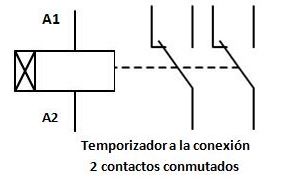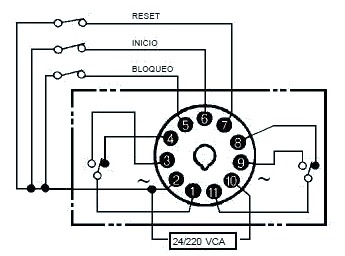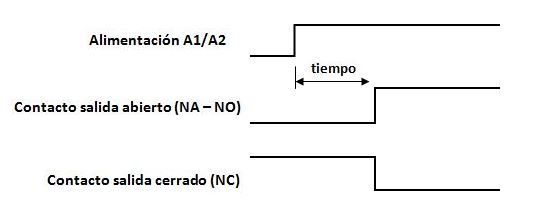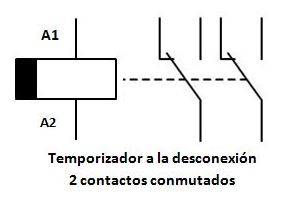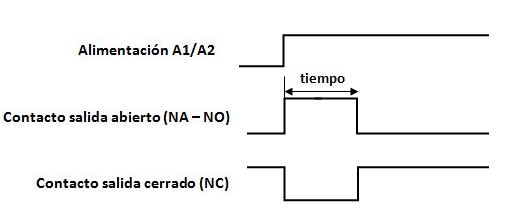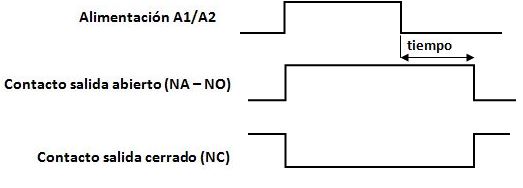- Technical Information
- 4 likes
- 63871 views
TIMERS FOR INDUSTRIAL AND DOMESTIC AUTOMATION.
Timed timers or relays are elements that allow you to control events based on time based on a trigger or start signal. We will discard in this article time scheduler clocks, which although they also allow to handle events based on time, these are not sourced in a signal but at a certain time.
In this article, we will not enter the inner workings of the timers, but in their use and section.
In the concept of timer, we can first differentiate two types of elements that co-index with the definition of timer, similar operation (and name) but different mode of use. These elements are timed cameras or blocks and timed relays.
Timed cameras and blocks.
They are non-self-contained timer elements, that is, they must be associated with another element, contactor or relay, along with which it performs its function.
We can distinguish two types or families from such timed elements:
- Timed contact blocks or cameras for contactors. These elements are usually associated with contactors, adding 2 contacts with timed operation. These types of timer elements do not change the operation of the item to which they are associated (contactors), it continues to work in the same way, they only add additional contacts
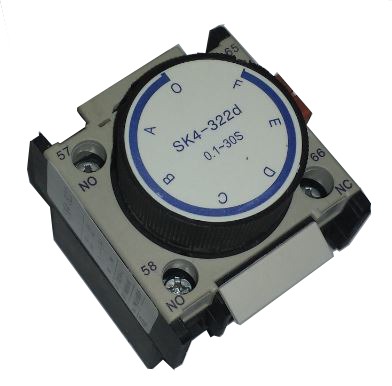
-
Timing blocks for relays and contactors. These types of elements alter the operation of the element to which they are associated, changing the mode of operation. If added to a relay, it becomes a timed relay. They don't add any additional contact.

Timed relays.
These types of timers are fully self-nom, are equipped with one or more output circuits, simple or switched.
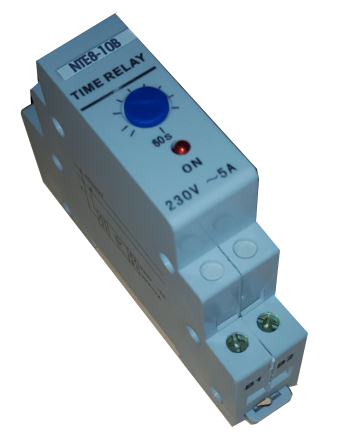
We can also distinguish two types of timed relays depending on the shooting mode:
-
Timer that start operating at the time they receive supply voltage, are the most common, the start of operation occurs when voltage is received in the supply inputs (A1 and A2)

-
Timers with independent operating input to the power circuit. These timers are usually continuously receiving voltage at their power inputs (A1 and A2) and have a start input that when activated, the timer starts operating.
The most common way to classify both timer cameras and timed relays is based on their working mode, there are several working modes, the main working modes are two:
Timers to the connection.
In this type of timer operation, once the supply voltage is received at A1 and A2 or the start signal, the operating cycle starts, after the set time has elapsed the switching of the output contacts occurs.
Timers on disconnection.
In this type of timer operation, once the supply voltage is received at A1 and A2 or the start signal, the output switches immediately, after the set time has elapsed the return to sleep of the output signal occurs.
This type of operation, we have 2 operating modes:
- The timer starts the cycle as long as it receives the start voltage or signal, and starts the time display even if the start voltage or signal remains.
-
The timer starts the cycle as soon as it receives the start voltage or signal and starts counting the time at the time it disappears.
Another characteristic and very important, not to say crucial, is the range of times in which the timer can operate, there are fixed ranges, in which, each model is calibrated for a certain time range, and cannot be changed, to change the range you have to proceed to replace them, or the multi-rules, this type of timer allows to be used in a very wide range of times , the timeline is often changed by a selector.
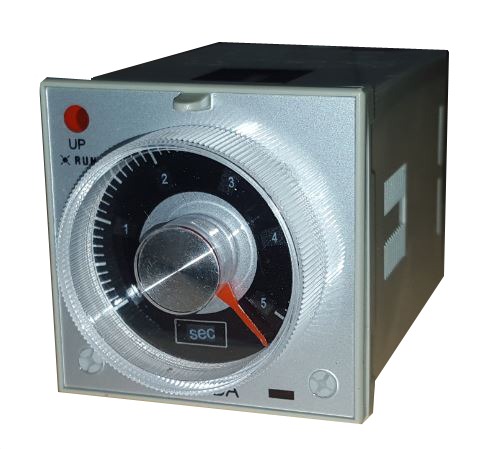
We can also determine the type of timer setting, it can be by analog setting, which are equipped with a rotary knob (dial) to adjust the working time, or digital, in which the adjustment is done by digital indication.
There is an increasingly important group of timers with the ability to be configured to adapt to various modes of operation, this type of sophisticated timers are so-called "multimode", which almost always are also multi-fast, so that using a single type of timer we can adapt it to most of the forms of work that we usually need.
In the following link you can download the features of one of these sophisticated timers:
48x48 pluggable 230Vac multi-drift and multimode timer
We have ignored the type of output contacts of the timer relays, there are simple configurations with a single open contact, such as timers with multiple outputs, such as the one shown in the following link which is a timer with 2 outputs with switched contacts, one direct and one timed, one of the contacts is used as a contact of a normal relay and the other as a contact of a normal timer.
48x48 pluggable 230Vac multi-speed timer (on connection)
You can expand information and collect a wide range of timers in ADAJUSA

